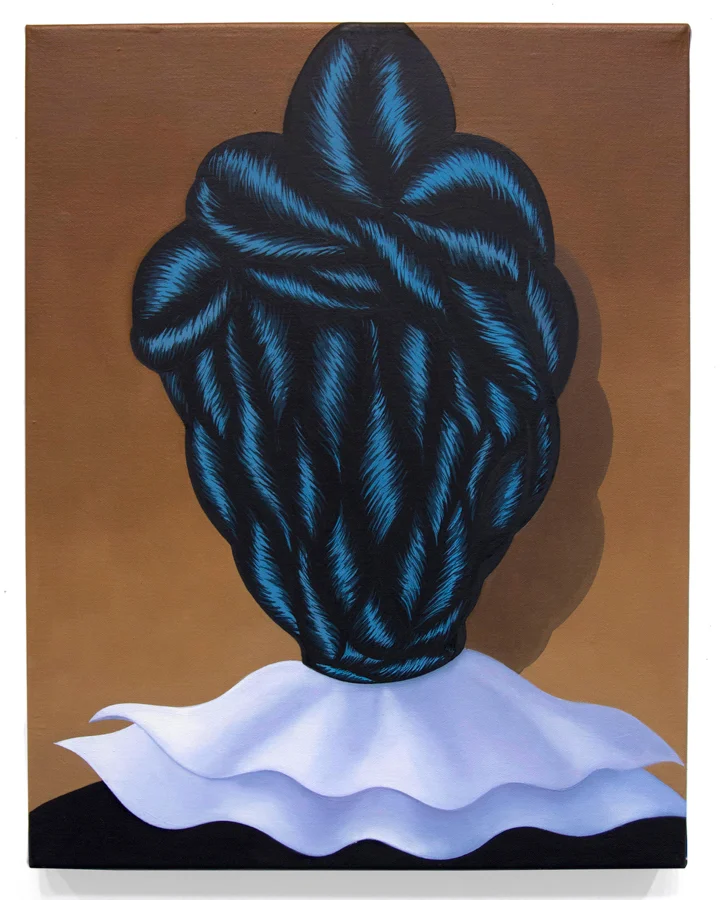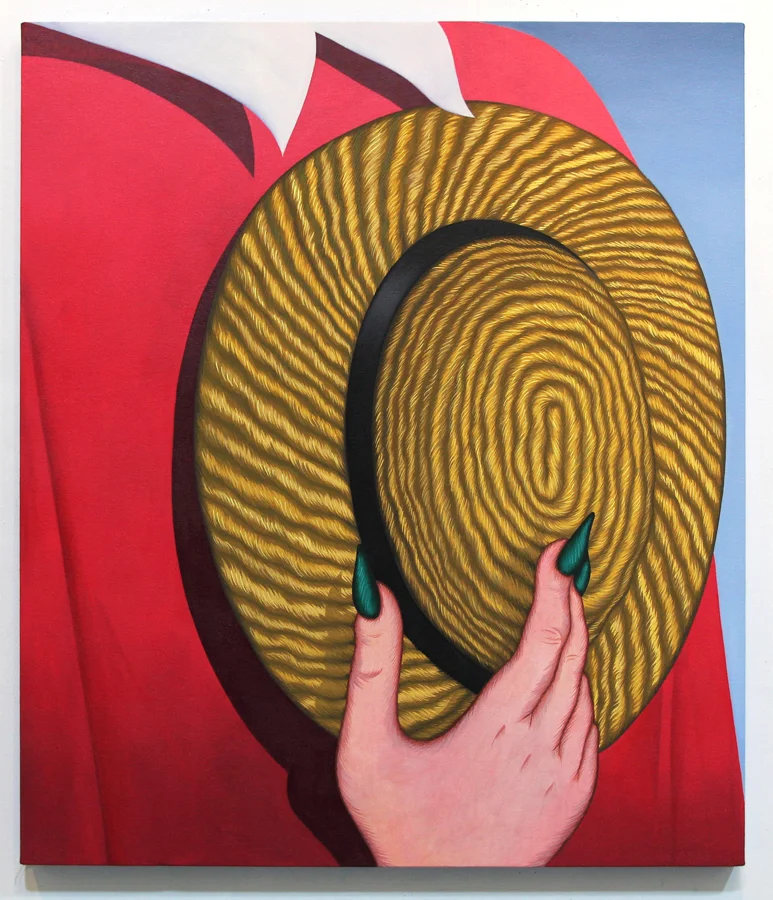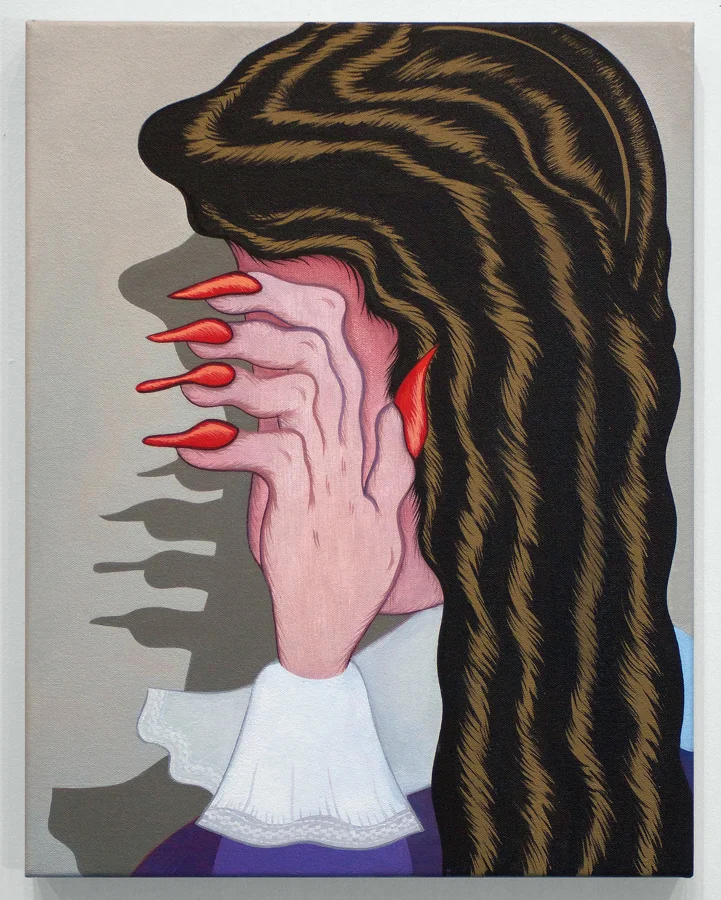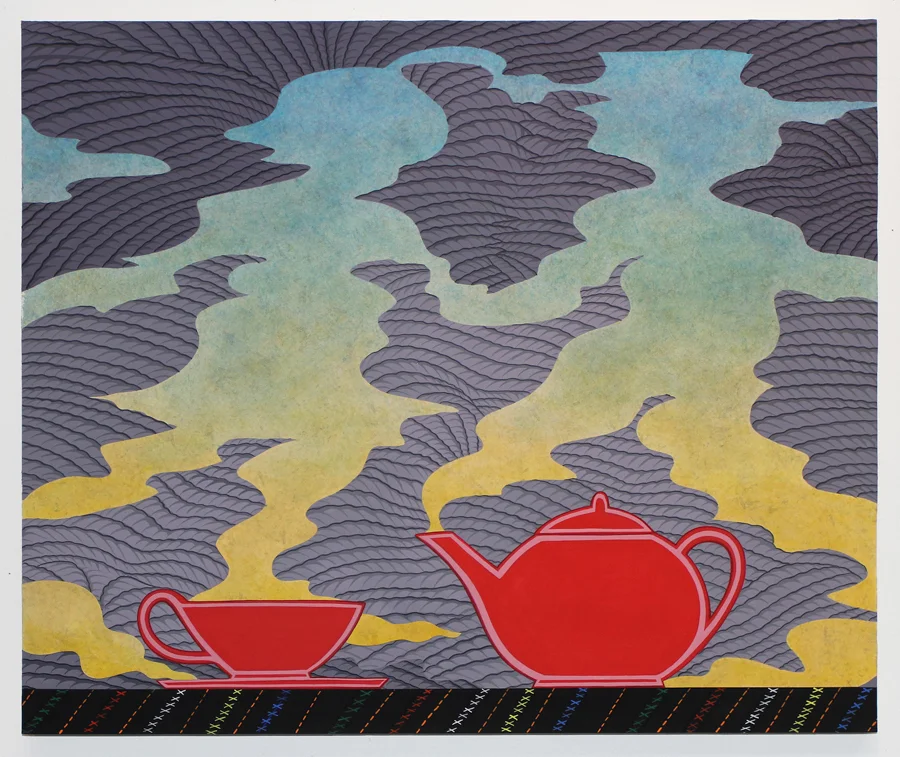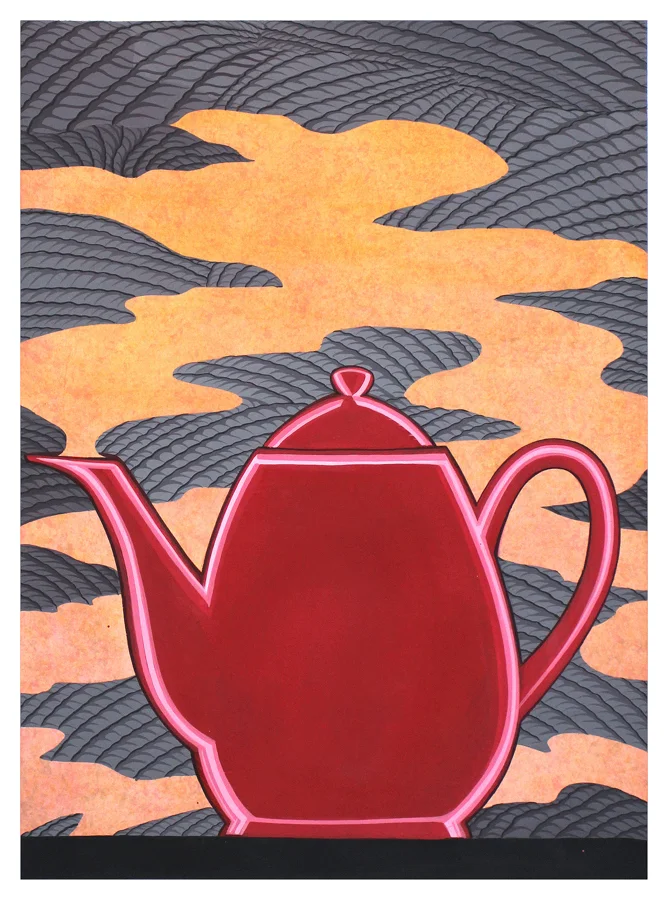Julie Curtiss
Julie Curtiss is a French artist based in Brooklyn. In 2004, she studied at the Art Institute of Chicago thanks to a Louis Vuitton Moet Hennessy Award. After her graduation from l’Ecole des Beaux-arts of Paris in 2006, she lived in Tokyo. Influenced by the local art scene and Japanese graphic imagery, she started a new body of works focusing on drawing. After a brief come back in France, she finally settled in Brooklyn in 2010 and was recipient of a Van Lier Fellowship from the New York Foundation for the Arts in 2012. Curtiss shows her works in various venues and galleries of the New York City area.
STATEMENT
I enjoy associating humor with darkness, the uncanny and the mundane, grotesque shapes to vivid colors. I work from mental notes or imagination. With ideas of narration, I will utilize recurring elements from one painting to another, or leave some of the action outside the frame, thus creating a form of suspense.
My artworks are psychological. By omitting parts of an image or suggesting abnormal situations, I would like to contrast a feeling of familiarity with surrealism.
I am interested in the various aspects that female identity can take, especially through the opposite notions of Nature and Culture. I like to represent smoking teacups and cigarettes, objects that call to mind a domestic, tamed image of women. On the other side, organic, ambiguous body parts allude to the archetype of a woman fused with nature and her animalistic drive.
With faceless portraits of women, gnarled fingers and toes, and voluptuous bodies composed of hair, I would like to present the viewer with an enigmatic puzzle, an invitation to reflect on the idea of an unfixed, ever-changing self.
Julie in her Brooklyn Studio. Photo by Maxim Ryazansky.
Q&A with Julie Curtiss
Questions by Emily Burns
Hi Julie! Can you give us some insight into your process? Do you plan your compositions beforehand? Does drawing play a role?
I used to rely exclusively on my intuition in the past but now I find that a few quick sketches ease the process considerably. I usually start with a basic idea in mind and sketch it out a few times until the composition satisfies me. For larger scale works I will transfer my sketch on a transparent sheet and then project it onto the canvas. Just the basic outlines, nothing detailed. This way allows proportions to stay somewhat correct.
What are some of your primary references or sources for subject matter?
Everyday life, a feeling, a gesture, paintings from my favorite artists, a paradox, a story, a memory…
What is a primary theme or point of departure for your recent body of work?
It all started with a small series of works on paper, using gouache. I just wanted to limit my vocabulary and employ similar elements from one drawing to another: body parts, cigarettes, high heels, hair… combine them in different arrangements, and see what would come of it. I avoided working overall complex compositions and instead cropped my subjects very intimately, leaving a lot of the action outside the frame. I wanted to convey a bit of a cinematic feel, and it ended up almost surreal. If you try to imagine the missing parts of the image, it really doesn’t make much sense.
Congrats on your inclusion in the recent group show, Post Analog II at The Hole. I saw the show a few weeks ago and it was really fantastic. Is making work in a post-Internet, digital age something you think about a lot?
Thank you! I was glad to be included in that show alongside many friends of mine. Actually, I was a bit surprised to be part of the show at first because I didn’t think of my work as particularly relevant. I feel sometimes a little old-fashioned and I love referencing art history. However, after reading Kathy Grayson’s thoughtful write up, I could see how social media has changed the way I apprehend art, relate to it, and make it. For example, the fact that I have a constant access to image references on my phone when in the studio must have an impact on my practice. I have to admit that Instagram really helped my career. I am an image-based artist and my paintings translate well on the small screen. I often think of other art forms or more complex practices that are disadvantaged by the current social media craze.
Gouache is a really tricky medium, but you really nail it in your works on panel. When did you start working in gouache? What drew you to the medium?
I have worked with gouache for a long time. I love the flatness of gouache and its quick drying qualities. I tend to draw rather than paint, that’s why gouache is ideal for me. You can go into fine details, like for instance when I paint hair. It also covers quickly and the colors are very vivid.
Can you talk about the surface of your works in gouache vs. the works in acrylic?
I try to mimic the feel and qualities of gouache when I paint with acrylic. I use acrylics that have a matte finish and that are highly pigmented. Unfortunately, gouache is a less stable medium and isn’t water resistant. When I work on canvas or on a larger scale, I prefer using acrylics and oil, for the sake of longevity.
What is the attraction of hair as a primary subject for you?
Hair was present in my works since the very start. Hair fascinates me because it’s one of the most durable product of the human body, it’s an organ you can sever without pain. It has a function but it is also an ornament, and that encapsulates two of my favorite subjects: nature and culture. Also, when it comes to women, I find it interesting that if it’s on the head, it’s beautiful, but if it’s on the body, it’s repulsive. I like this dance of opposites.
What is a typical day like for you?
Work! It’s been a little hectic lately as my art career improved. I work four days a week as an artist assistant, and I am trying to cram the rest of the time with everything else: studio time, studio visits, emails, openings, house chores and leisure... I can’t wait to slow down the pace.
Do you feel like it is necessary to get into a particular headspace when in the studio? If so how do you get there?
I never had a hard time getting into a headspace. For sure making art can be frustrating, but I have learned that if you already tend to be hard on yourself, it’s important not to panic, and to be gentle.
What are the most important components of your studio?
Good light, good vibes if you have studio mates, a good sound system, decent WIFI and delicious snacks.
What do you listen to while you work? Is this an important part of your practice?
Someone turned me on to Reverberation radio a couple years ago and I am ashamed to say that I listen to it nonstop. It’s online and they have something like 250 mixes of eclectic, surf rock, international music ranging from the 1960’s to now. It’s great.
What are some of the artists that you look at the most often or most recently?
I am going to pell-mell list some of my favorite artists: Robert Gober, Peter Saul, Nicole Eisenman, Tal-R, John Wesley, Christina Ramberg, Chris Ware, Manet, Courbet, Degas, Magritte, Duchamps, Matthew Barney, early Sue Williams, Bruno Gironcoli, Westerman, Philip Guston, Bonnard, De Chirico, William N Copley, Carroll Dunham, Picasso, Dorothea Tanning’s sculptures, Thomas Scheibitz, Alfred Hitchcock, Luis Bunuel, Matisse, Jim Nutt, Ray Yoshida, Roger Brown, Chris Ofili, Ingres, Loie Hollowell, Sasha Braunig…
Has there ever been a book/essay/poem/film/etc that totally changed or influenced you? What are you reading right now?
I am reading Delirious New York by Rem Koolhaus at the moment. It’s great, and it informs so much about the environment we live in here. One of my favorite books ever is a graphic novel by Chris Ware called Jimmy Corrigan, it’s so innovative and immersive in the comic book art form, it combines gorgeous graphics with narration and words in a way that never cease to inspire me. It’s both transcendental and pathetic, deeply human and myopic.
Any advice to recent grads who are interested in getting their work out there and exhibiting?
Visit your peers, attend shows in your community, be curious, organize shows, be smart when you use social medis… but make art because it fulfills you, because you need it and people will feel your passion.
Any advice from your past that has stuck with you or helped you?
Mmmhhhh not sure…
What is the best exhibition you have seen recently?
I have a huge list of the shows I want to see! I can only think of a Tal R show at Cheim and Read I adored last January… that was before a crazy storm of projects and studio visits hit me. The storm has lasted for the past four months now.
What is your relationship with social media? Do you have a favorite or least-favorite platform?
I like Instagram and Instagram has been good to me. It’s incredible how it connected me to so many artists and opened new doors. Although it’s not my favorite, I think it’s hard not to use Facebook, as far as I know it’s the best platform for organizing shows and planning your events.
You grew up in France, what brought you to New York? How important is it for artists to live in or at least maintain a footprint in the city?
I got married. My husband (Clinton King) is American and we decided to moved to New York. And it was hard! In so many ways New York constantly tries to push you out. My very first job was selling macaroons in a Café, dressed in a maid outfit! But Clint and I dug our heels, and from then on it was a step at a time. As far as I am concerned, there is an additional element of pride to anything you achieve when you live in New York City!
Do you have any other news, shows, residencies or projects coming up?
I am so happy to be part of Dreamers Awake a big group show of female surrealism curated by Susanna Greeves opening in June at the White Cube Gallery in London. It’s going to be a sort of survey show, gathering works of established/passed artists like Louise Bourgeois, Dorothea Tanning, Mona Hatoum… and a younger generation of artists: Caitlin Keogh, Loie Hollowell, Sascha Braunig…
This coming October, I will have a solo show at 106 Green Gallery in Greenpoint Brooklyn and before that I am going on a two week residency program at Saltonstall Arts Colony upstate New York.
Thanks so much for sharing your work and talking with us!
My pleasure!
To find out more about Julie and her work, check out her website.


